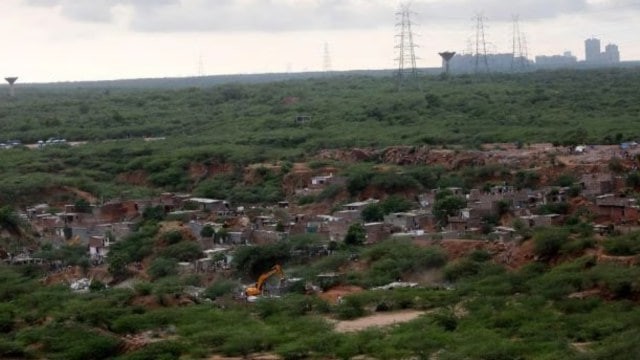



COP30 adopted the Just Transition Mechanism, a win for developing countries seeking equity in climate action. But the mechanism lacks timelines, clear functions and, crucially, funding from developed nations. Without finance, it risks becoming an empty shell, leaving nations like India without support for a fair energy transition.

Copyright infringement not intended
Picture Courtesy: DOWNTOEARTH
At the 30th Conference of the Parties (COP30) in Belém, Brazil, the UN Framework Convention on Climate Change (UNFCCC) adopted a new Just Transition Mechanism (JTM), also known as the Belém Action Mechanism (BAM).
|
Read all about: UNFCCC COP 30 l India's Climate Crisis and the Path Forward |
A Just Transition refers to the process of shifting towards a green, low-carbon economy in a way that is fair, equitable, and inclusive.
It ensures that the benefits of climate action are shared widely, while the costs and burdens do not fall disproportionately on vulnerable workers, communities, or developing nations.
The core principle is to leave no one behind while tackling climate change.
International Cooperation: Enhance cooperation, technical assistance, and capacity-building for countries undertaking a just transition.
Coordination and Coherence: Act as a central hub to coordinate the currently fragmented just transition initiatives, ensuring they align with the Paris Agreement goals and principles like Common But Differentiated Responsibilities (CBDR).
Knowledge Sharing: Create a global platform for sharing best practices, tools, and knowledge among policymakers and practitioners.
Support & Matchmaking: Facilitate support for countries by matchmaking projects with potential funders and technology providers.
Social Protection: Providing unemployment benefits, healthcare, and pensions for affected workers.
Reskilling & Upskilling: Offering training programs to equip the workforce with skills for new, green jobs.
Economic Diversification: Investing in new industries and sustainable infrastructure to create alternative livelihoods.
Inclusive Dialogue: Ensuring that all stakeholders, including labor unions, local communities, and Indigenous Peoples, are part of the decision-making process
The Just Transition Work Programme (JTWP)It was formally established at COP27 in Sharm el-Sheikh and its operational details were negotiated and adopted at COP28 in Dubai. Its core objectives are:
|
Economic and Financial Hurdles
High Transition Costs: India needs an estimated $1 trillion over 30 years for a just coal transition, funding mine closures, worker rehabilitation, and green energy infrastructure. (Source: iForest, 2024)
Risk of Stranded Assets: The transition to renewables risks creating "stranded assets," like unviable fossil fuel infrastructure (e.g., coal plants), leading to financial losses. The IPCC warns that ongoing fossil fuel investments could result in trillions of dollars in global stranded assets.
Regional Disparities: Coal-dependent states like Jharkhand, Chhattisgarh, and Odisha face a double challenge: losing revenue and jobs without the means to diversify their economies.
Social and Infrastructural Hurdles
Energy Security in Developing Nations: Coal is vital for India's energy. As of 2024-25, it powers over 70% of electricity and 55% of total energy. An abrupt phase-out would jeopardize development and energy access. (Source: PIB)
Inequitable Impacts: The transition risks worsening existing inequalities, as women often in low-paying or informal energy jobs may miss out on green job skilling.
Infrastructure Gaps: Transitioning to renewable energy demands upgrades to electricity grids to handle intermittent sources like solar and wind, requiring energy storage and strong transmission infrastructure.
Key Initiatives for Just Transition |
|
|
Indian Initiatives |
|
|
Global Initiatives |
|
Strategic Planning & Governance: Create a national body to manage the transition, oversee coal plant closures, and ensure equitable fund and benefit distribution to affected areas.
Sustainable Financing: Utilize international financing like JETPs and domestic instruments like green bonds. Multilateral banks must increase grants and low-cost loans for transition projects.
Worker & Community Support: Develop green sector reskilling and job creation strategies. Implement robust social safety nets: compensation, retraining, and pension support for transitioning workers.
Inclusive Decision-Making: Involve local communities, trade unions, and marginalized groups in planning and implementation to build trust and ensure context-specific policies.
Infrastructure Development: Investments should prioritize upgrading grid infrastructure, developing energy storage, and building robust renewable energy supply chains.
Source: DOWNTOEARTH
|
PRACTICE QUESTION Q. With reference to the Belém Action Mechanism (BAM) recently adopted at COP30, consider the following statements: 1. It is a formal body under the UNFCCC to advance the 'just transition' agenda. 2. It was established with a dedicated and predictable financial corpus contributed by developed nations. 3. India opposed its creation, citing concerns over unilateral trade measures. Which of the statements given above is/are correct? A) 1 only B) 1 and 2 only C) 2 and 3 only D) 1, 2 and 3 Answer: A Explanation: Statement 1 is correct: The Belém Action Mechanism (BAM), adopted at COP30 as a Just Transition Mechanism (JTM) under the UNFCCC, serves as an institutional framework to enhance international cooperation, technical assistance, capacity-building, and knowledge-sharing for advancing the 'just transition' agenda, rooted in equity and Common but Differentiated Responsibilities and Respective Capabilities (CBDR-RC). Statement 2 is incorrect: The COP30 agreement established a mechanism to link finance, technology, and capacity-building but did not create a dedicated and predictable financial fund, leaving the details of the financial modalities and operational timeline for future discussions amidst ongoing disputes over climate finance obligations. Statement 3 is incorrect: India strongly supported the creation of the Just Transition Mechanism (BAM) as a step toward operationalizing equity and climate justice, despite concurrently raising concerns about unilateral trade-restrictive climate measures like the EU's Carbon Border Adjustment Mechanism (CBAM). |
The Just Transition Mechanism (JTM) is a formal body established under the UN Framework Convention on Climate Change (UNFCCC) at COP30. Its purpose is to ensure that the global transition away from fossil fuels is socially just and equitable by providing a framework for international cooperation, technical assistance, and capacity-building.
Just Transition Mechanism (JTM) is also known as the Belém Action Mechanism (BAM) because it was formally adopted at the 30th Conference of the Parties (COP30) held in the city of Belém, Brazil.
India has welcomed the establishment of the JTM as a "significant milestone." Its official stance, expressed by the Union Environment Minister, is that a just transition must be economy-wide, nationally determined, and firmly grounded in the principles of equity.







© 2025 iasgyan. All right reserved